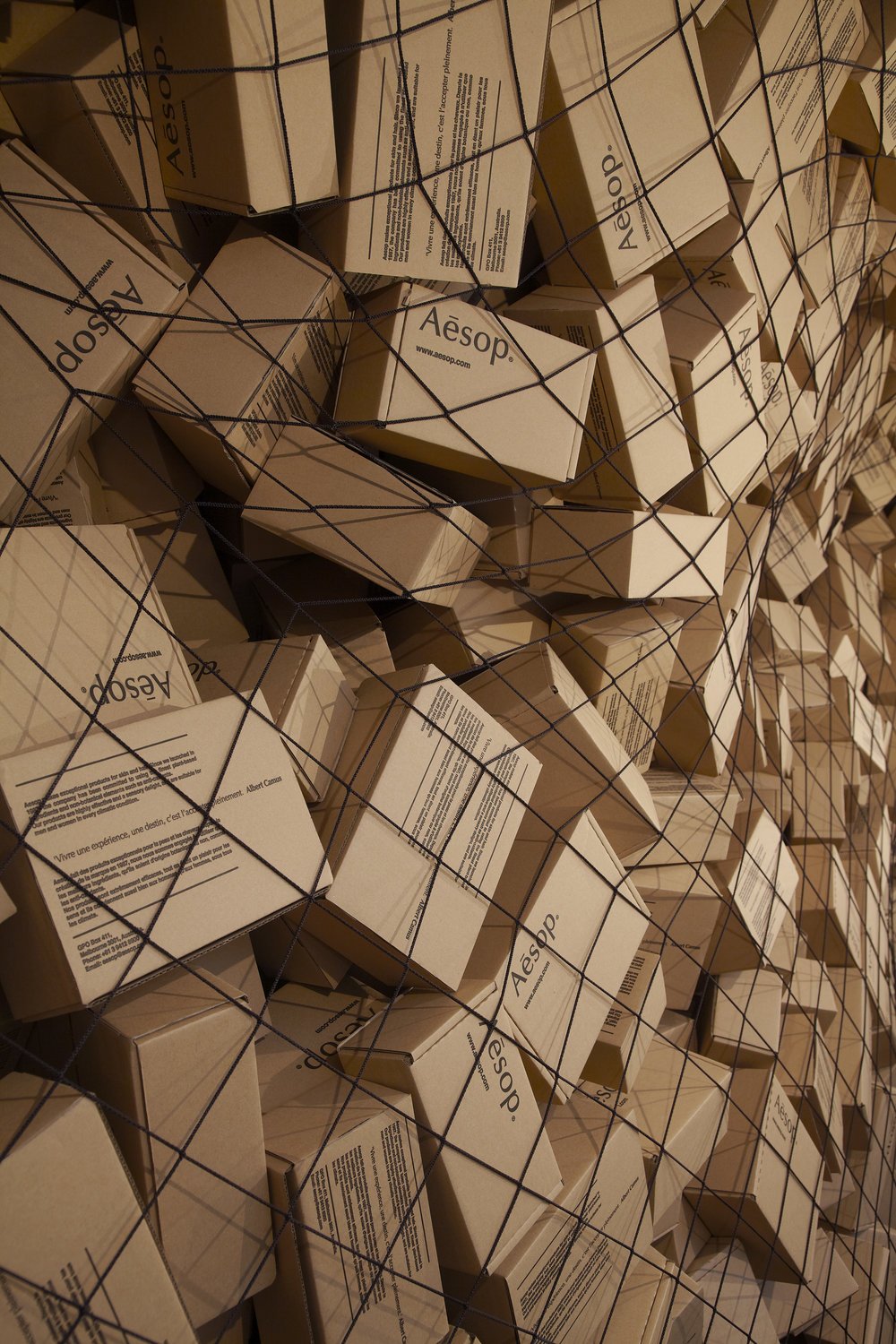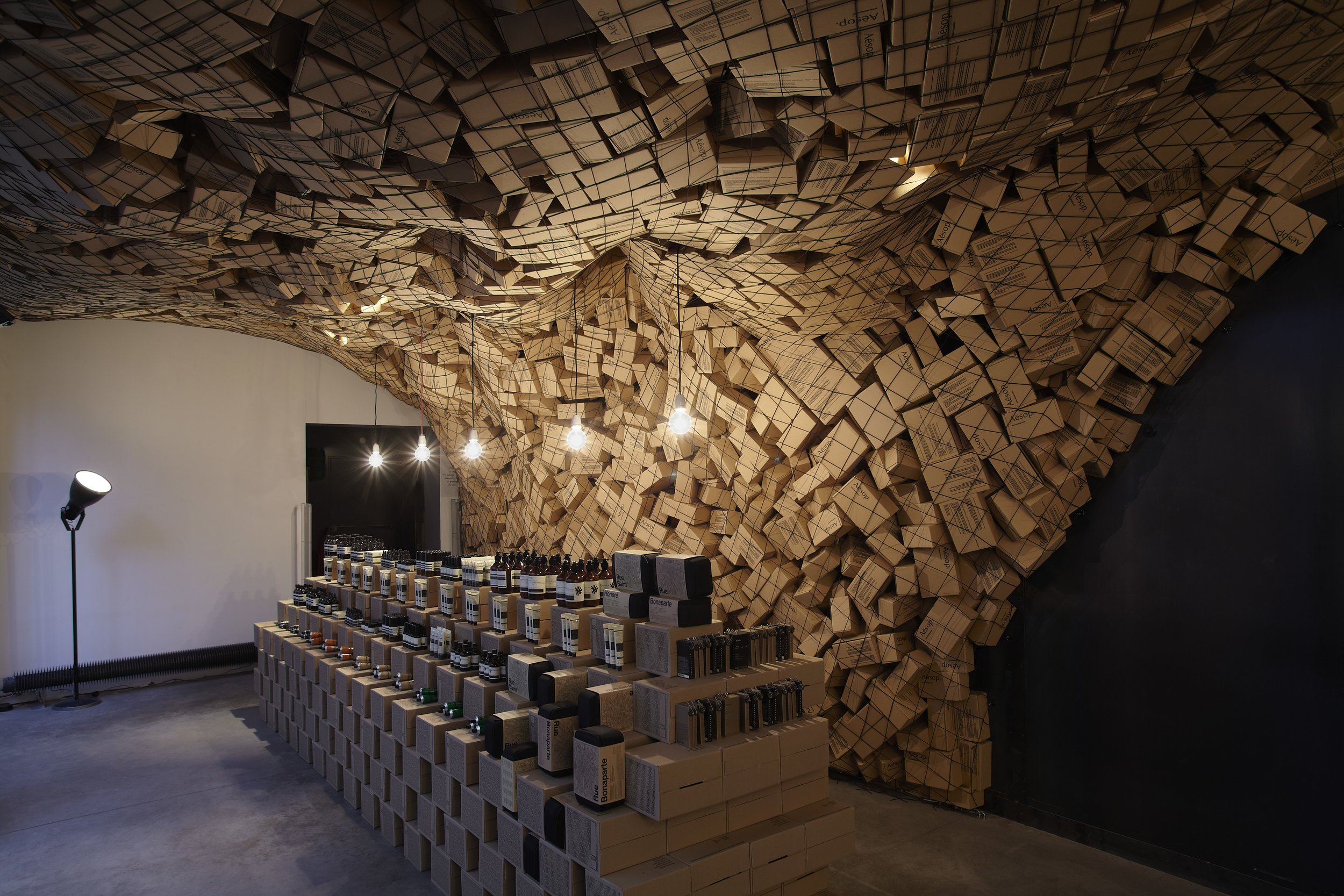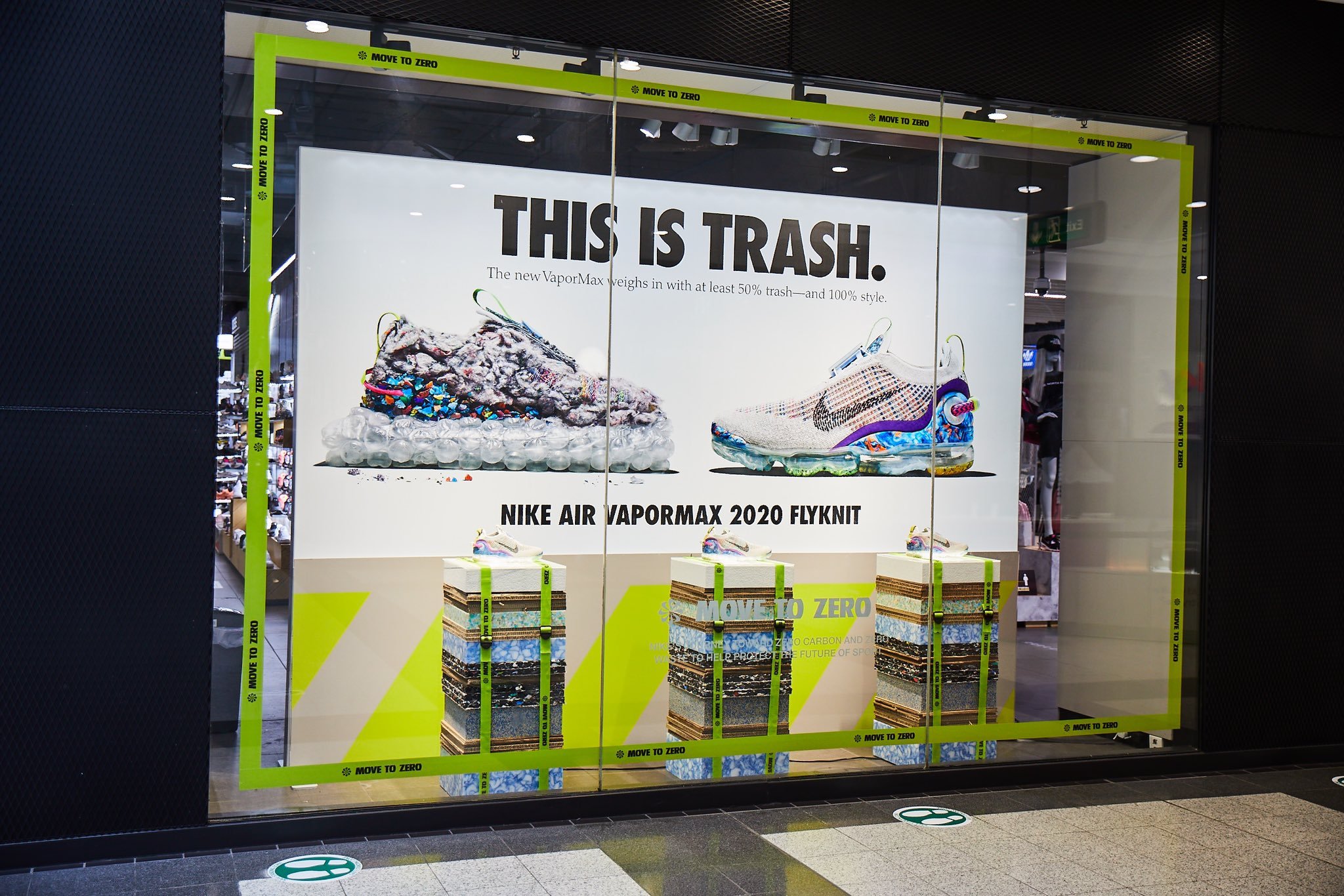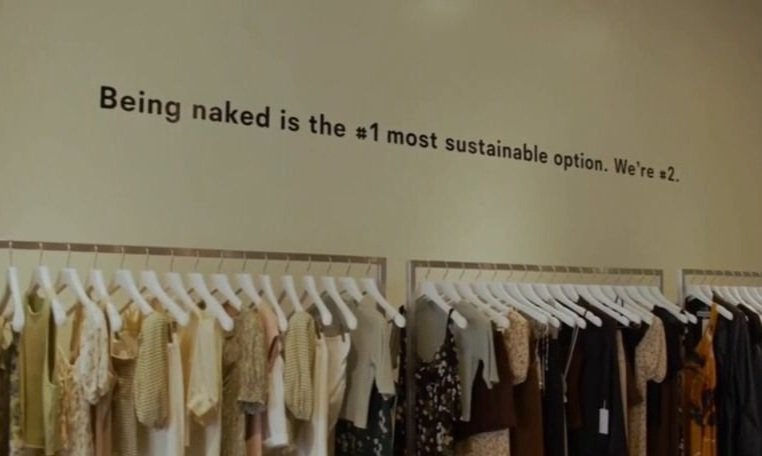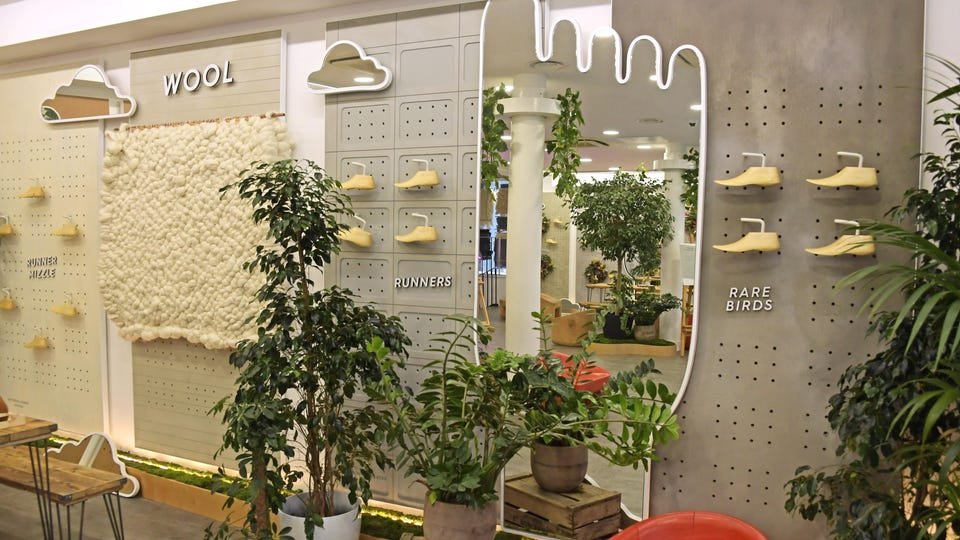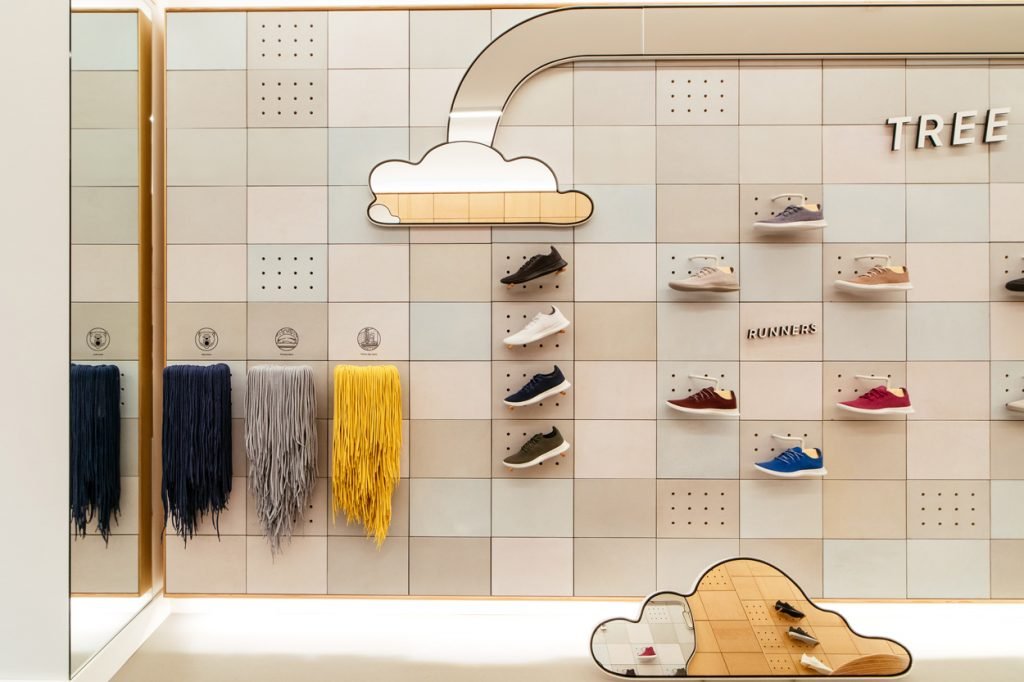Truth to Materials
For many years we have talked about striving to be sustainable in our Retail environments, and our endeavour to achieve a truly authentic sustainable result can be challenging.
This year, as Covid distances us in the rear-view mirror, our journey to become more purposeful has intensified, but much like the fuel in our cars - cost remains a barrier.
This is a very real challenge for Retailers as they juggle priorities. With a customer that is now even more focused on businesses that believe sustainability isn’t just for Christmas, we are forced to turn our heads to what we can do better in-store.
Bose, Milan Design week
Mango, Global
Ralph Lauren, Global
People want to feel good about their purchase.
A Window Into Sustainability
There has been a notable increase in consumers’ willingness to pay more for sustainable products, and the message of our products and services begins long before it’s in the hands of our customer.
The window and visual journey in-store should serve to spark the attention of our consumer with immediacy. The story of sustainability, social responsibility and our purpose towards environmentally positive outcomes needs to be relevant and personal to your brand.
At the heart of sustainable practices is an emotive story and our reason why. We need to surface that narrative into a succinct and tangible visualisation.
Aesop, Paris
Nike Town London - Move to Zero
Stories of sustainability give consumers that extra little nudge towards buying.
Who Cares?
Well, more of your customers than you might realise. Consumers are becoming increasingly conscious of their purchasing decisions and the consequential impact on the environment.
Seeking out value-oriented companies that employ sustainable practices, and most importantly exposing those practices in a way that can be seen and understood.
Consumers have become increasingly powerful influencers of companies’ strategies.
Made, London.
58% of consumers believe they can make a difference through their everyday choices and actions in 2022.
Ace & Tate, Antwerp
Euromonitor International: Voice of the Consumer
How Does This Impact Our Stores?
Our physical stores are becoming the centre of experience and the most crucial point of engagement with the customer. Covid has accelerated consumer demand for a technology-driven, in-store experience that has a seamless integration with online.
‘Global retailers plan to implement the following: to devote more space for digital fulfilment; to shift or open more experiential formats; reduce in-store inventory; open pop-up or modular stores; or develop micro-fulfilment platforms.’
Euromonitor International’s Voice of the Industry Retailing Survey, 2021
How do we achieve a sustainable AND experience focussed store that is seamlessly connected with our online store?
Ambush, Tokyo
Brands marketed as sustainable or with sustainable credentials are growing 5.6% faster than other brands.
Anthrolopologie, Global
Havard Business Review
A Material Difference
LA-based fashion brand Reformation sells clothes that are both covetable and eco-conscious. It’s also making an impact with its sustainable stores which are Green Business certified, meaning they implement strategies to save energy, improve water efficiency and reduce CO2 emissions. This involves incorporating materials like LED fixtures, rammed earth and recycled fabric insulation in its buildings.
Fashion designer Stella McCartney’s flagship store in London embodies sustainability throughout – from its handmade, organic and sustainably sourced furnishings to their biodegradable mannequins.
A striking entrance awaits the customer, from the moss-covered rocks on the ground floor to playful features like the pebble dash, squeezable recycled foam and textured card [made using waste paper from the brands head office], all considerately interwoven across the store.
Reformation
Store Strategy
Allbirds store strategy aims to channel the philosophy behind the company’s shoes and was described in a press release from the brand as “intentionally un-designed, using natural materials, and comfortable.”
At its core, the concept for Allbirds flagship aims to provide customers with an improved try-on experience, which feels organic (in every sense of the word).
The displays around the store call attention to the merino wool, sugarcane, tree, and other materials the brand uses in its shoes and garments. Customers can also see the carbon footprint of each product clearly displayed – a first for the fashion and footwear industry, and a hallmark of Allbirds’ approach to sustainability.
Stella McCartney, London
‘If we wait for customers to make sustainable development a condition for purchasing, then nothing will happen. It's as if green products were somehow not normal. They are normal, it is the other products that are not normal. It's up to us to work out how to make green products the new normal’
François-Henri Pinault, Chairman of Gucci
Allbirds, Global stores
It’s a race, and the most sustainable retailers are the only winners in the eyes of the consumer.
Rag & Bone, Melbourne
Written By Jemma Caprioli
Check out more on sustainability:







